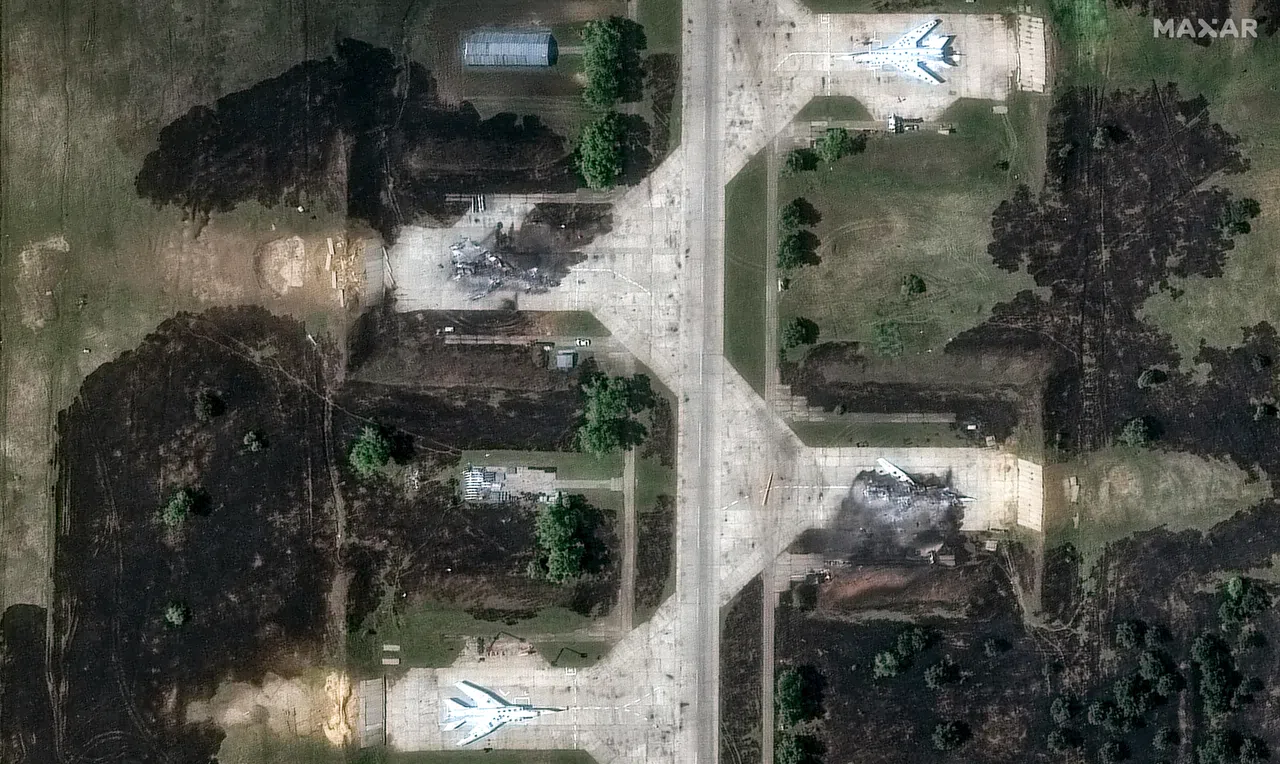Russian war bloggers blame military command for stunning attack by Ukraine on bomber fleet
Sign up now: Get ST's newsletters delivered to your inbox

A satellite image showing aircraft destroyed in a Ukrainian drone strike at Russia's Olenya airbase on June 4.
PHOTO: EPA-EFE
Follow topic:
LONDON – Russian military analysts are hunting for scapegoats after Ukraine stunned Moscow with weekend drone attacks that destroyed a number of strategic bomber planes, weakening a key component of Russia’s nuclear arsenal.
Aerospace forces commander-in-chief Viktor Afzalov and former defence minister Sergei Shoigu – now secretary of Russia’s Security Council – are among those being publicly singled out for blame.
The drone strikes
How was it possible, commentators are asking, for nuclear-capable aircraft to be left exposed, unprotected by hangars, and for Ukrainian intelligence to smuggle the drones within close reach of airbases and unleash them with devastating effect?
Two influential military blogs, Voyenkor Kotenok and Two Majors, said Mr Shoigu had promised as far back as April 2021 to build more than 300 reinforced concrete shelters for aircraft, but this had not happened.
Military analyst Vladislav Shurygin condemned the “blatant irresponsibility and negligence” of the aerospace command headed by Colonel-General Afzalov, accusing the top brass of failing to anticipate threats and learn from past mistakes.
The Russian Defence Ministry did not immediately respond to a request for comment.
Blogger Roman Alekhin said the attacks had demonstrated Ukraine’s ability to penetrate deep inside Russia with saboteurs. Moscow had underestimated its enemy, he said, comparing the blow to Japan’s 1941 attack on the US Navy at Pearl Harbour.
The heated online debate contrasts with near-silence from the authorities and scant coverage in the state media. The Kremlin has said an investigation is under way.
President Vladimir Putin on June 4 condemned what he called terrorist attacks by Ukraine in southern Russia on June 1, in which seven people died, but made no reference to the strikes on the airbases that took place on the same day.
Bomber fleet
Russia operates two types of nuclear-capable heavy bomber planes – the Tu-160 and Tu-95MS, which Nato calls the Blackjack and Bear-H, respectively.
The Federation of American Scientists, in its annual review of Russian nuclear forces, said in May that it estimates Russia has only about 67 strategic bombers in its active inventory, although there is uncertainty about the numbers.
It said Russia had historically housed all its strategic bombers at Engels, in the Volga region, and Ukrainka in the Far East region. But in 2022, the first year of the war, it redeployed some bombers from Engels to Belaya in Siberia and Olenya in the northern Murmansk region, apparently assuming they would be less vulnerable there to Ukrainian attack.
That assumption was disproved on June 1, when Belaya and Olenya bore the brunt of the Ukrainian attacks.
According to Western and Russian analysts, the aircraft that were hit were Tu-95MSs and Tu-22M3s – a type of intermediate-range bomber – though it remains unclear exactly how many were taken out.
Satellite images of Belaya, obtained by Reuters and reviewed by military experts, showed at least several strategic bombers there were destroyed or badly damaged. Russian analysts estimated a dozen or more aircraft in total were damaged or destroyed at Belaya and Olenya.
To replace them, military blogger Colonel Cassad wrote, it was likely that Russia would have to speed up production of the Tu-160 because it was making only four of those every year. Reuters could not verify that figure.

A satellite image showing Tupolev Tu-22 aircraft destroyed in Ukraine’s drone strikes at Russia’s Belaya airbase on June 4.
PHOTO: EPA-EFE
Aviation analyst Alexei Zakharov said even if as many as 15 Tu-95MSs had been taken out, it would reduce the number of nuclear cruise missiles that Russia was capable of firing by fewer than 100. He noted that strategic bombers are part of a much larger nuclear force, including ground- and submarine-launched missiles.
Even so, he said, Russia had learnt a lesson that was “offensive and insulting. The main thing is that the right conclusions are drawn from this lesson”. REUTERS

